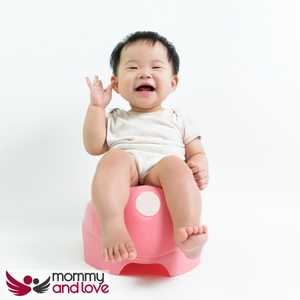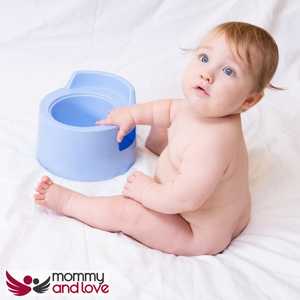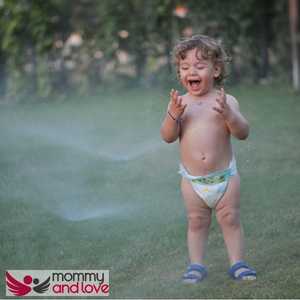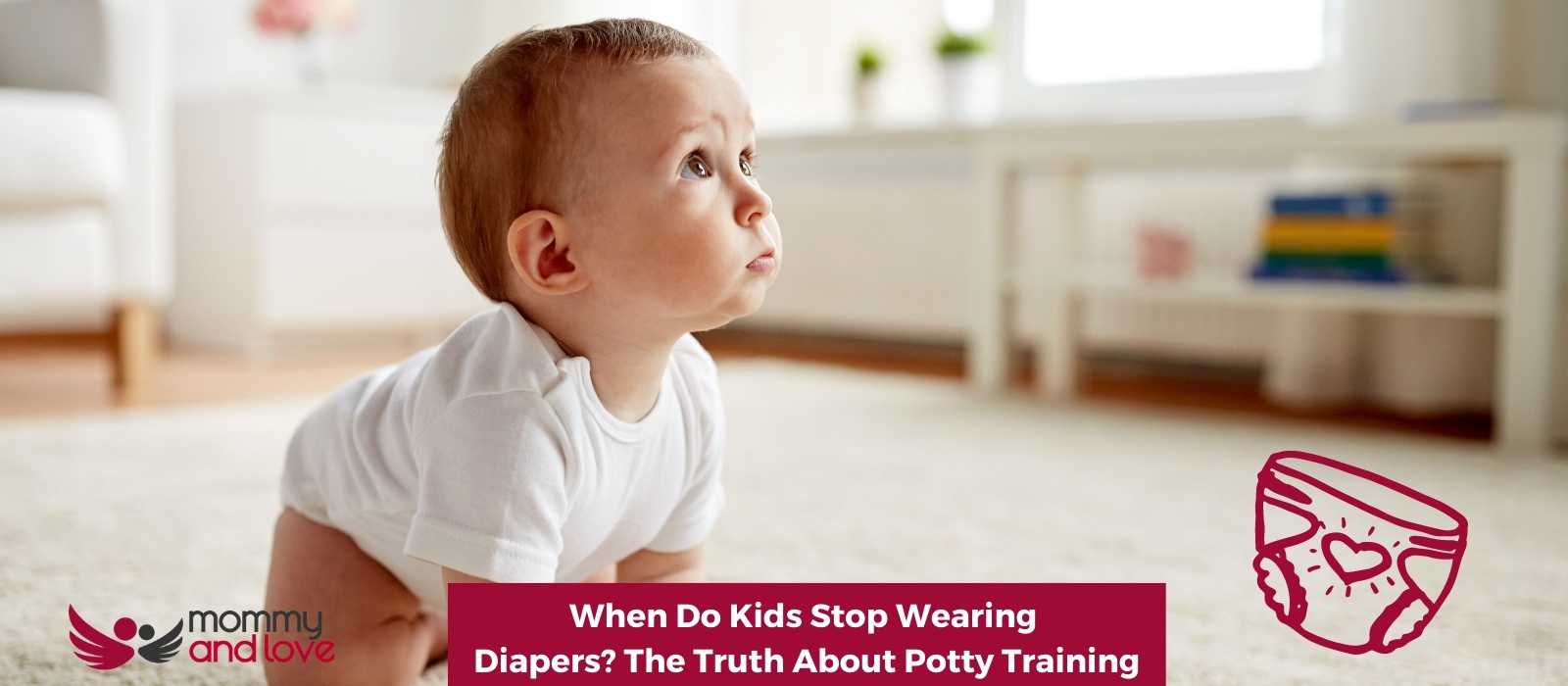Potty training is a milestone that many parents look forward to. But when do kids stop wearing diapers? The answer to this question may surprise you! In this blog post, we discuss the different stages and when kids typically stop wearing diapers. We will also provide some tips for making the process easier for both parents and children with this crash course!
What Is Potting Training?
Potty or toilet training is the process of teaching a child how to use the toilet for urination and defecation and stops wearing diapers. It usually starts when a child is between 18 months and three years old. A child may not completely stop using diapers but that is totally normal. The average age in the United States is around 30 months. However, not all children are the same and will reach this milestone at their own pace.
There are many different methods and the best approach to training your child will depend on their individual personality and learning style. The most important thing is to be patient and keep a positive attitude throughout the process. With a little time and effort, your child will be using the potty like a pro in no time!
When To Potty Train Your Child?
The average age is between 18 and 24 months. However, some children may not be ready until they are school-age. There are a few signs to look for to see if your child is ready to stop using diapers and start using the potty:
- Shows interest in using the potty or wearing underwear and doesn’t like wearing diapers anymore.
- Stays dry for at least two hours at a time, especially after a few mornings in one week.
- Follows simple instructions.
- Developmentally ready to start school.
- Communicates when he or she needs to go potty.
If you think your child is ready to start being potty-trained, the best thing to do is to just start! However, it is important to get it started before your child starts school. The time a child potty trains makes a huge difference to the average cost of disposables for that child.
Why Is It Important to Start Potty Training Your Child?

Well, for one, it’s a sign that your child is growing up and becoming more independent. Additionally, being toilet-trained can help to stop diaper rash and other skin irritation problems caused by diapers.
Finally, once your child is at the age where she is ready to be potty-trained and move on from wearing a diaper, you’ll no longer have to worry about buying diapers or changing them as often! All of these benefits make training to use a potty an important milestone for both the parent and child.
How to Encourage Potty Training

As your toddler begins to show an interest in the potty, it’s time to start encouraging them to use it.
One way to do this is to stop using diapers. This will let them know that it’s time to start using the potty.
Another way to encourage them is to praise them when they use the potty and remind them that they are now a big boy.
Never beg or plead because this will only give them more power over you. This will let them know that they’re doing a good job. Finally, you can offer them a reward for using the potty. This will give them something to look forward to.
What Are Potty Training Pants?
Potty training pants are an essential tool for parents to potty train their children. They can still wear diapers but it is better to wear pants designs specifically for this training. They help the child stay dry by absorbing pee and poop, which can otherwise be very messy. They also make it easier for parents to keep track of their child’s bathroom habits. Most importantly, these pants give children a sense of independence and control over their bodies.
There are many different types of these pants on the market, so it’s important to choose the right ones for your child. Some factors to consider include absorbency, fit, and durability. You’ll also want to make sure that the pants you select are comfortable for your child to wear. With so many options available, it’s easy to find the perfect pair of pants for your child.
Overnight Pants
Do you have a little one who is ready to start being toilet-trained? If so, you may be wondering if overnight pants are a good option.
Overnight pants can be a great way to help your child feel more confident and comfortable as they transition from diapers to underwear especially during at night. Here are a few things to consider:
- Size – They come in a variety of sizes. Be sure to choose a size that will be comfortable for your child to wear overnight.
- Style – There are many different styles available. You may want to choose a style that has a waterproof layer to help prevent accidents overnight.
- Absorbency – They typically have more absorbency than regular underwear. This is important to consider to prevent your child from wetting the bed and if he tends to sleep through the night without waking up to use the bathroom.
Daytime Potty Training Pants
If your little one doesn’t wear diapers, daytime pants can be a helpful tool! They can help your child feel more confident about using the potty during the day, and can also make cleanup easier if there is an accident. Here are some tips for choosing the right pants for your child:
- Look for pants that are comfortable and easy for your child to move around in.
- Choose a style that your child can easily pull up and down on their own.
- Avoid pants with complicated fastenings that your child might have difficulty with.
- Look for pants that are absorbent enough but not so bulky that they’re uncomfortable to wear.
Pull-Ups
Pull-ups are a part of potty training, which often begins around age three, depending on the child. For daytime training, many professionals advise against using them. Instead, go directly to underwear so your child knows what it’s like to pee. However, pull-ups can be useful at night time or during long car rides when it’s not practical to stop and go to the potty. They can also help with the transition from diapers to underwear during the day.
Reusable Potty Training Pants
Eco-friendly and reusable pants are a great way to save money and help the environment. These pants can be washed and reused many times, making them a more sustainable option than disposable pants. They are also usually more comfortable for your child, as they are made from natural and softer materials.
Disposable Training Pants
Disposable pants are an easy and convenient way to potty train your child. They are absorbent, leakproof, and comfortable for your little one. They can also be a great way to avoid those dreaded accidents.
- Choose the one that is the right size for your child. They come in a variety of sizes, so it is important to find one that will fit your child snugly and comfortably.
- Make sure to choose ones with an absorbent liner. This will help to keep your child’s skin dry and free from irritation.
- Most of these pants come with leakproof sides are a great option to consider.
Why Do Some Older Kids Stay In Diapers?

Other parents might wonder why their children are resisting being trained to use a potty. There are a few different reasons why this might be the case.
For some kids, there may be emotional barriers that make it difficult for them to transition from diaper to using the potty.
Something might have happened to a child’s life that had an emotional impact. For others, there may be a medical reason or medical problems such as frequent urinary tract infections or small bladder capacity that make it impossible or impractical to be potty trained.
Whatever the reason, it’s important to remember that every child is different and there is no single “right” way to potty train. Some kids will be ready to stop using diapers at a very young age, while others may need a bit more time. The most important thing is to be patient and to work with your child at their own pace. With a little bit of patience and understanding, you’ll eventually get there.
Is Potty Training Different With a Little Girl Than a Little Boy?
Most people think that potty training a girl is easier than with a little boy. After all, girls are supposedly more intuitive and in touch with their bodies than boys. And while it’s true that they may have an easier time understanding the mechanics of using the toilet and stop using diapers completely, that doesn’t mean they don’t come with their own set of challenges.
Here are a few things to keep in mind:
- Girls are often more resistant to stop using diapers. This is because they don’t like the feeling of being wet and they don’t want to have to sit on a cold, hard toilet seat.
- Girls may also be more afraid of falling in the toilet. This is because they’re often shorter than boys and the toilets seem like a big, scary hole to them.
- They tend to take longer to train. This is because they’re usually not as interested in using the toilet and they don’t have to pee as often.
- They may also have more accidents. At this age, they’re still getting used to the sensation of using the toilet and they may not be able to hold it in for as long as boys can.
Despite these challenges, a completely trained daughter is definitely possible. Every parent should be patient, keep their sense of humor, and remember that an accident can happen and is a normal part of the process. This should be beneficial in the long run.
Conclusion
Potty or toilet training is different for every child. The key to success is knowing the right time to start it, providing support and being patient with your baby which is a major factor.
When you decide to let your toddler off diapers and start potty training, talk to your kid about what they can expect and why they need to use the toilet instead of a diaper. Be sure to talk about the big kid underwear they will be wearing and let them pick out a few pairs.
The American Academy of Pediatrics recommends that parents wait until their child’s ready before starting to train and stop using diapers. Many kids show signs of readiness at different ages but usually between 18 and 24 months, but every baby develops at their own pace. The best way to tell if your baby is ready is by watching for physical and behavioral signs that he or she is ready to move on from diapers. If you have any doubts or have concerns, you can always talk to your child’s pediatrician or doctor.

This article was written by: Gian MIller – Full-Time Writer, Baby Whisperer & Dad of 3.
Gian spends a lot of his time writing. A self-proclaimed baby whisperer, Gian has been through it all with his own children and is passionate about sharing his hard-won wisdom with other parents. When he’s not writing or changing diapers, you can find him playing the guitar or watching baseball (or preferably both at the same time).




